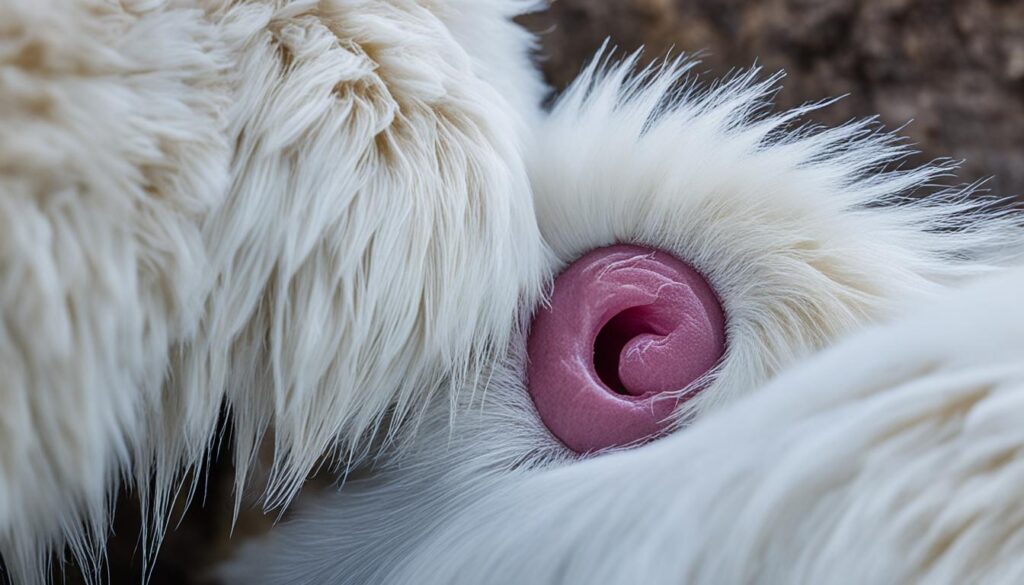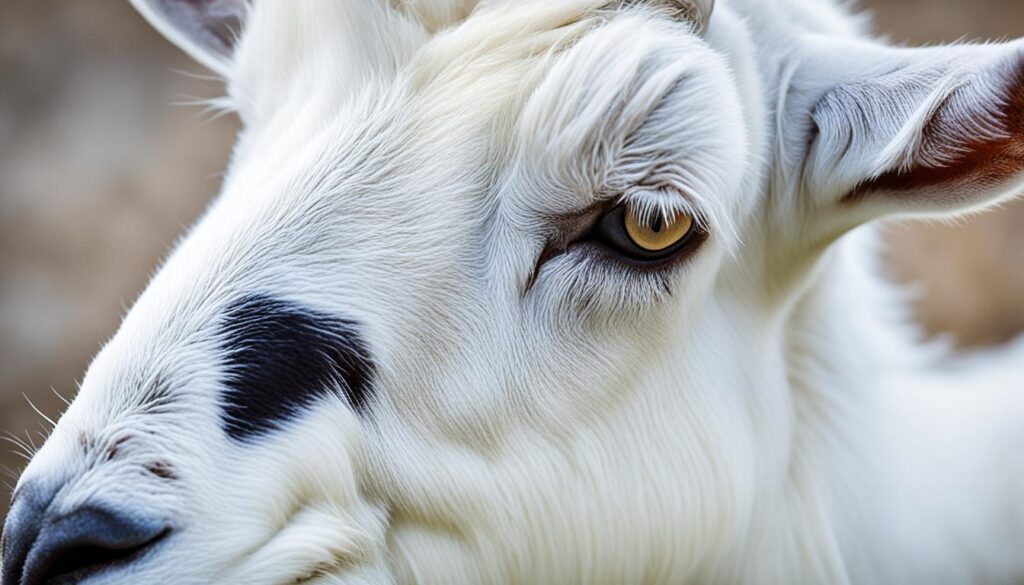A milky white discharge in pregnant goats often signifies that kidding is near, but changes in its appearance can be a sign of complications. As you tend to your pregnant goats, understanding the nuances of goat pregnancy care becomes essential. From about 145 to 155 days is the length you would expect a goat’s gestation period to last. It’s wise to start preparing a kidding stall by day 140 to ensure a comfortable environment for the upcoming birth. Fias Co Farm and other reputable sources recommend close monitoring as the birthing process unfolds; from physical changes such as a raised tail due to loosened ligaments to behavioral shifts like restlessness and vocalization.
The onset of labor may present itself through a normal milky white vaginal discharge, generally noticeable up to a month before delivery. Paying careful attention to any developments, including an abnormal goat pregnancy discharge, is paramount. The transition of this discharge to a copper hue could mean the arrival of your new kids is merely a few hours away. An expanded udder and noticeable tension in the skin also herald the impending birth, highlighting the diverse signs of goat pregnancy that require your vigilance.
Key Takeaways
- Prepare a kidding stall around day 140 of gestation for a secure birthing environment.
- Stay vigilant for signs such as restlessness and tail-raising, indicating labor is near.
- Monitor vaginal discharge closely, as a shift to copper color could suggest labor within hours.
- Udder development and skin tension are additional indicators of goat pregnancy progress.
- Keep contact information for a vet handy in case of birth complications or abnormal goat pregnancy discharge.
- Regularly assess overall health by watching for lively behavior and physical posture.
Understanding the Normal Goat Pregnancy Process
Goat health during pregnancy is a prime concern for hobby farmers who value the well-being of their herd. Vigilant observation of your goat’s behavior and physical condition not only aids in detecting normal pregnancy progress but also helps to quickly identify any health issues. Expect lively and engaging dispositions from a healthy pregnant goat, indicative of their resilient nature against illnesses.
Posture and gait serve as windows to your goat’s comfort and health. They should display strength and agility, with a robust stance and a coordinated walk. Beware of any arching of the back or slumping head; these are tell-tale signs that may require your attention – possibly signaling discomfort or underlying health conditions.
Managing the weight of your goats is crucial to their health and the viability of their pregnancy. Transition diets wisely; a balanced intake supports them through various stages from gestation to lactation. Keep a lookout for coat quality; dullness or hair loss may imply the need for nutritional intervention or parasitic treatment.
Key Characteristics of Healthy Pregnant Goats:
- Posture: Strong, square-standing, level topline, alert expression
- Gait: Graceful, well-coordinated, free of limping or circling
- Weight: Balanced, appropriate for pregnancy and lactation stages
- Coat: Smooth, glossy, breed-specific qualities
As you approach the final stages of pregnancy, a focus on goat pregnancy discharge can be pivotal. Normal discharge may present itself without concern; however, changes in color or consistency should prompt immediate attention to assure the health of both doe and forthcoming kids.
| Behavior | What It May Indicate | Recommended Action |
|---|---|---|
| Sudden isolation | Beginnings of labor | Prepare for kidding, ensure a calm environment |
| Excessive vocalization | Discomfort or pain | Conduct health check, possibly consult a veterinarian |
| Changes in discharge | Advance stage of pregnancy or infection | Monitor closely, seek veterinary advice if abnormal |
Your keen observation aids in deciphering the delicate signs of a normal pregnancy or an impending birth, allowing for timely intervention if needed. By combining these insights with a nurturing environment, you’re setting the stage for a smooth delivery and healthy offspring. Remember, the subtleties in goat pregnancy discharge and behavior are as telling as any vocal expression of wellbeing or distress.
Identifying Milky White Discharge from Pregnant Goat
As a dedicated hobby farmer, the prenatal period of your goats is as crucial as any other phase in their lifecycle. Understanding the manifestations of pregnancy, particularly as the kidding date draws near, can significantly enhance the welfare of both the doe and the upcoming kids. One of the primary signs of goat pregnancy is the presence of milky white discharge, which is often a prelude to labor. Misinterpretation or oversight of such key indicators can lead to complications, making it essential to know what to look for.
Checking for Signs of Labor
Stay alert for subtle changes in your pregnant goat’s behavior as they can signal that labor is imminent. You may notice a raised tail or an inward curl during contractions. A milky white discharge from a pregnant goat is commonplace when kidding is approaching. While a certain level of discharge is normal, continuous monitoring is necessary for timely intervention, should complications arise.

Interpreting Discharge Color and Consistency
It’s critical to assess the color and consistency of the discharge. Initially, the discharge is white and milky, which is normal. However, a change in color, especially to a copper-like hue, indicates that the birthing process will likely commence within a few hours. The discharge acts as a chemical signal for you to prepare for kidding, ensuring all necessary supplies and facilities are ready.
Recognizing Other Related Symptoms
Beyond discharge, other signs of discomfort such as scratching at the ground, licking the body, or a pained facial expression may occur. Often, just before labor, the doe’s eyes might appear distant or bloodshot—a physical response to pain—while lip curling signifies contraction stress. It’s the interplay of these symptoms that can provide a clear picture of your goat’s labor status.
Understanding these nuances not only helps in providing timely care but also in anticipating your goat’s needs during this critical time. Recognize the labor and delivery process as a series of delicate biological events where your observation can make a significant difference in outcomes for your doe and her offspring.
| Discharge Color | Consistency | Labor Indicator |
|---|---|---|
| Milky white | Thin to slightly viscous | Approaching labor (days or hours) |
| Copper-like | Thin and watery | Imminent labor (hours) |
| No discharge | N/A | No labor signs |
As you maintain vigilance over your pregnant goat, remember that each sign is a potential clue towards ensuring a healthy kidding process. Keep these expert insights in mind, apply them to your herd management practices, and you’ll increase the chances of a successful and uncomplicated birth.
Managing Goat Health During Pregnancy
As a dedicated hobby farmer, your goats’ health is paramount, especially during pregnancy. Nurturing them necessitates a harmonious blend of high-quality nutrition and secure, comfortable shelter. Your goat’s dietary needs escalate during pregnancy, so provide a balanced feed that’s free from impurities. Steer clear of anything that might dampen their normally hearty appetite — it’s a telltale barometer of their health. And remember, the shelter you provide protects your pregnant goat from the stress of harsh weather, which can be as detrimental as poor nutrition to their well-being.
Providing Adequate Nutrition and Shelter
Feeding your goat may seem straightforward, but during pregnancy, it’s all about precision. Strike a fine balance between overindulgence and nutritional scarcity. A consistent, high-fiber diet, with access to clean water and a mineral mix, is essential. Their shelter, whether a barn or a dedicated kidding area, should be draft-free yet well-ventilated, to guard against respiratory issues that could complicate your goat’s pregnancy and the health of the newborn kids.
Monitoring Physical Changes and Udder Development
As the due date nears, you’ll want to be vigilant for any physical transformations indicative of an impending birth. Subtle signs like the relaxation of tail ligaments might go unnoticed without regular checks. A significant aspect to monitor is udder development, as it can swell noticeably in preparation for milk production. If you detect anything out of the ordinary, like an abnormal goat pregnancy discharge, it’s wise to seek advice from a vet to ensure everything is proceeding as expected.
Preparing for Kidding and Post-Birth Care
Equipping yourself for the birthing process and the care that follows is just as critical as managing the pregnancy. Having the necessary tools ready and a sterile environment will facilitate a smoother kidding experience. Post-birth care is about ensuring the kids nurse promptly and that the mother’s health is stable. Taking a Goat Birthing Course might not only bolster your confidence but will arm you with critical insights to handle both routine and unexpected situations, leading to a secure and victorious birthing outcome.

